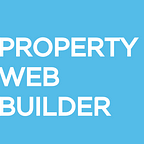It was about 4 years ago that I first released PropertyWebBuilder as an open source project. I can’t say it has been a runaway success but it has grown slowly to become a solid reliable product for building a real estate website.
My ambition in creating it was far greater though. I wanted it be evolve into a product with many many more features than it currently has and serving a much greater user base. Each year I have considered multiple options for moving the project forward but because of time constraints I haven’t been able to do much.
This year has been different. With the help of a few individuals we have been able to work on a complete rewrite with many exciting new features. We now face a bit of a dilemma though. Is it going to be worth the effort that will be required to open source this new version?
Most people do not realise how much effort goes into open sourcing a project but my experience over the last 4 years makes me wary. Its not just the work required in the code (removing private information, writing good comments, making it understandable etc). There is also a massive emotional cost. It’s hard to quantify but constantly worrying about what people think and how to respond to feedback gets draining very quickly.
Supposedly in return for all the effort an open source project will benefit from many people contributing to improve it. PropertyWebBuilder has indeed received a lot of contributions and positive feedback but on balance I don’t think it has been worthwhile.
In fact I suspect that making the project open source has in some ways held it back. Most contributions have been about minor details here and there. Hardly anyone has shown interest in big ideas to really move it forward. The minor tweaks and the time we have spent on otherwise unimportant tasks have prevented us from looking at the more meaningful improvements.
Fortunately in the last year I have worked with some paying clients who have helped me arrive at the big vision of what PropertyWebBuilder should be. In particular the last one I worked with had access to a large number of listings which allowed us to understand what features created impact at scale.
I will write another post with more details about the new features we’ve added but for now here is a brief overview of the main ones:
- Canned searches
Site admins can now associate the results of preconfigured searches with a section of a page. This allows them to create pages where only properties with specific characteristics are displayed.
- More advanced analytics
Data about exactly what searches are made by users is difficult to collect using WordPress sites or google analytics but fairly easy with PropertyWebBuilder. This data can be used as the basis for understanding what to highlight on the site which further increases user engagement.
- Allow anonymous users to save favourites
Though this is a fairly small feature to implement it has an outsized impact on user engagement. Users are able to click a button to save properties they like in local storage for the next time they visit.
- Enable automated alerts
A step up from saving favourites, this requires the user to leave an email to which new listings that may be of interest are automatically sent.
We have also made some significant changes to the architecture and approach. The most important of these is that PropertyWebBuilder is no longer a Rails engine but rather a fully fledged stand-alone Rails application.
Other changes are:
- The admin interface has been re-implemented in Vue.js (originally we used Ember.js). We now use the webpacker setup in rails to include this in the main Rails repo — this would not be possible while PropertyWebBuilder was a Rails engine.
- The database schema has been improved significantly. Most importantly, a page showing the details of a property is backed by a database model called Listing rather than Property. A single real estate item (like a flat or a house) can now have multiple listings associated with it (eg: a for-sale listing or a short-term-rental listing). This may seem like a minor detail but has significantly improved the way the site works. Again this deserves a post of its own.
- Now uses tailwind for the look and feel of the main website and vuetify for the admin pages.
- We added graphql endpoints to allow PropertyWebBuilder to be used as a backend for any SPA or web app that can work with graphql.
- The content management functionality has improved significantly and its now much easier to add widgets like testimonials to pages
What these changes mean is that PropertyWebBuilder has gone from being a basic starter toolkit to something more suitable for medium to large estate agents with hundreds or thousands of listings. While we are happy to work with agents of any size it will be more interesting to work with larger ones that can benefit from the more advanced features.
What could also work out well would be to partner with a web company / developer shop that is interested in using PropertyWebBuilder for their clients.
If you want to work with us, feel free to reach out. The best way is via linkedin.
There are still quite a few details we need to iron out but we are happy to share the code with anyone who is seriously interested in participating. I guess in that sense we are happy to open source the project, just not in the traditional sense.
Do reach out if you have some interesting ideas or are willing to contribute in some shape or form to making PropertyWebBuilder better. We are looking forward to what the next 4 years will bring to a bigger and more powerful product.
